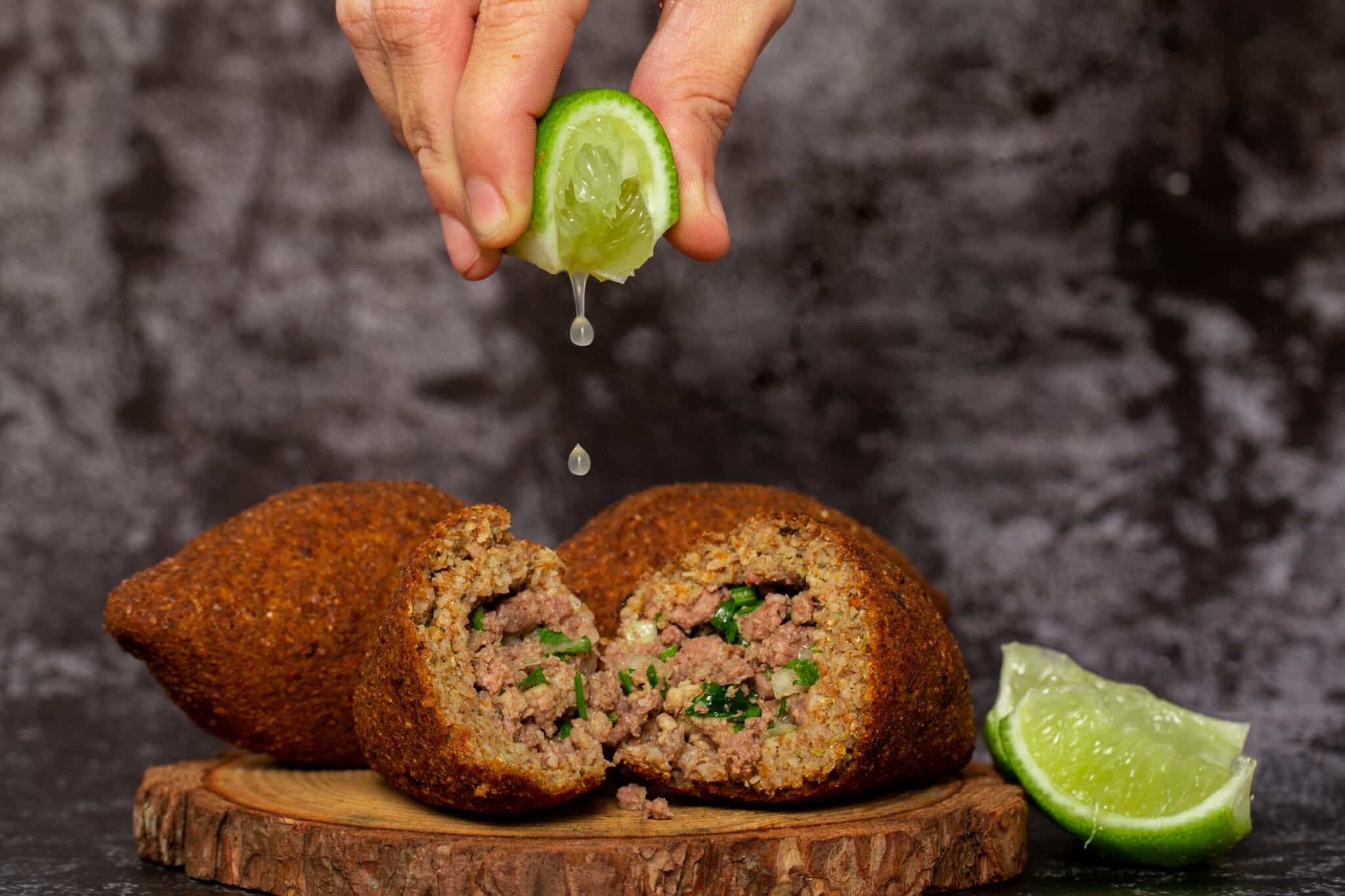
Kibbeh, a dish deeply rooted in Syrian culture, is often considered the national dish of Syria. This delicacy, made from finely ground meat and bulgur wheat, has been savored by Syrians for centuries. It’s more than just food—it’s a symbol of hospitality, tradition, and unity.
Preparing kibbeh requires meticulous craftsmanship and patience, yielding a flavorful dish that narrates its origin and the artisans who craft it. Join us as we delve into the world of this fascinating dish to appreciate its significance in Syrian and Middle Eastern cuisine.
For all the food enthusiasts out there, our Remitly team has crafted this guide as part of our series celebrating the culinary delights of our customers around the world.
The Origin of Kibbeh
Kibbeh traces its roots back to ancient times, born out of necessity when nomadic tribes required a portable food source for their lengthy journeys. Their solution was kibbeh—a blend of meat and grains that proved easy to carry and consume on the go.
With time, this modest meal grew to become an essential component of Syrian cuisine. Its fame extended throughout the Middle East and beyond, with each region incorporating its distinct touch into the recipe. Kibbeh showcases a plethora of variations and cooking techniques, each country contributing its unique style. Many believe that there are approximately 70 different variations of kibbeh worldwide.
Ingredients and Preparation of Kibbeh
Traditional kibbeh is crafted from lean meat (often lamb or beef), bulgur wheat, onions, cumin, coriander, salt, and pepper. The outer shell combines bulgur wheat, minced onions, and finely ground meat, while the filling is cooked meat seasoned with spices.
Creating kibbeh involves preparing the dough, forming the filling, shaping, and frying or baking for a crispy exterior and flavorful interior.
Syrian kibbeh has various versions, Aleppo offers kibbeh stuffed with cherries, blending savory and sweet. Coastal regions like Latakia substitute fish for meat, while Homs and Hama favor “kibbeh nayyeh,” a raw version with raw meat mixed with bulgur wheat and spices.
A Simple Kibbeh Recipe
We’re sure you’re eager to savor this delicacy. No need to wait; try it at home. While kibbeh demands time and patience, the end result is truly rewarding. Here’s a simple recipe to kickstart your kibbeh-making adventure.
Ingredients
For the outer shell:
- 1 cup of fine bulgur wheat
- 1 medium onion, finely minced
- 500 grams of lean ground lamb or beef
- Salt and pepper to taste
For the filling:
- 250 grams of ground lamb or beef
- 1 medium onion, finely chopped
- A pinch of cinnamon and allspice
- Salt and pepper to taste
Instructions
- Soak the bulgur wheat in warm water for about half an hour until it softens.
- In a large bowl, combine soaked bulgur wheat, minced onions, ground meat for the shell. Season with salt and pepper.
- Knead this mixture until it forms a smooth dough-like consistency.
- For the filling, cook ground meat in a pan over medium heat until browned.
- Add chopped onions and spices to the cooked meat. Stir everything together until you achieve an even mixture.
- Take a small amount of dough, form it into a ball, then hollow out to create a shell.
- Fill this shell with the prepared meat mixture, then seal it by pinching the edges together.
- Repeat this process until all dough and filling are used up.
- Fry or bake these stuffed balls until they turn golden brown.
Enjoy your homemade kibbeh!
Serving and Eating Etiquette for Kibbeh
When kibbeh graces the home or special occasions, it often takes center stage on the dining table, accompanied by fresh vegetables or yogurt-based dips like labneh.
When it comes to kibbeh, eating customs vary depending on its form: small, bite-sized pieces are usually savored with fingers, while larger portions may necessitate the use of utensils. Regardless of the method, each bite carries the essence of Syrian tradition and hospitality.
Kibbeh transcends being merely a dish; it reflects Syrian culture, encapsulating the nation’s rich history, culinary heritage, and sense of community. The communal preparation of kibbeh underscores the significance of togetherness in Syrian society. For many Syrians, kibbeh holds cherished memories and personal narratives, whether from family gatherings where everyone pitched in to shape the kibbehs or festive events where this dish was a constant presence.
The Broader Cuisine of Syria
Syrian cuisine mirrors the country’s diversity, with each region showcasing unique dishes rooted in local traditions and ingredients influenced by the settlers who have made Syria their home throughout its history.
Popular Dishes in Syrian Cuisine
Beyond kibbeh, there are other dishes that have gained recognition both locally and internationally.
Falafel, a deep-fried ball made from ground chickpeas, is a popular street food, often served in pita bread with fresh vegetables and tahini sauce. Shawarma, another well-known dish, features thinly sliced meat wrapped in flatbread with an assortment of fillings.
For those with a sweet tooth, Baklava, a pastry made of layers of filo filled with chopped nuts and sweetened with syrup or honey, is a must-try.
The Role of Food in Syrian Culture
In Syria, food transcends mere sustenance; it’s an integral component of social gatherings and celebrations, embodying hospitality and generosity toward guests.
Whether through communal meal preparation or sharing dishes at feasts, food acts as a conduit for building connections within individuals and communities. This cultural significance elevates every Syrian meal, turning it into both a culinary and social experience.
Visit the homepage, download our app, or check out our Help Center to get started.